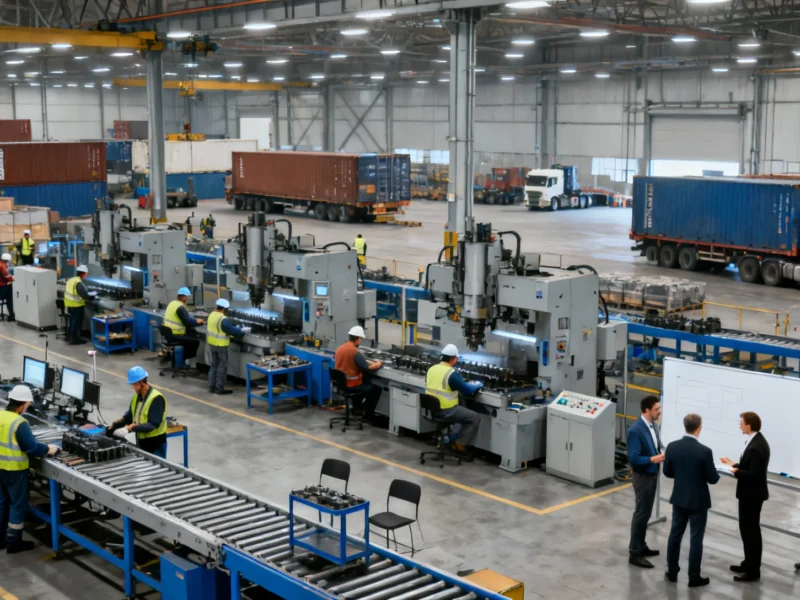Samsung’s Ambitious 2nm Exynos 2600 Hits Manufacturing Roadblocks
Samsung Electronics’ journey toward 2-nanometer chip production appears to be encountering significant challenges as the company struggles with yield rates for its upcoming Exynos 2600 processor. Industry sources indicate that initial production volumes for the much-anticipated chipset have been scaled back dramatically, with only 15,000 wafers scheduled for the first manufacturing run. This conservative approach suggests Samsung is proceeding cautiously with its first-generation 2nm Gate-All-Around (GAA) technology, which multiple sources have described as “premature” for widespread deployment across the entire Galaxy S26 lineup.
Table of Contents
- Samsung’s Ambitious 2nm Exynos 2600 Hits Manufacturing Roadblocks
- The Yield Conundrum: From 50% to 70% Targets
- Galaxy S26 Configuration Shakeup
- Broader Implications for Samsung’s Foundry Business
- Qualcomm’s Cautious Approach to 2nm
- The Technical Promise Versus Manufacturing Reality
- Looking Ahead: Samsung’s Uphill Battle
The Yield Conundrum: From 50% to 70% Targets
Samsung’s yield improvement trajectory tells a story of technical challenges. Initial reports suggested the company had achieved 50% yields for its 2nm GAA process, but recent updates indicate the Korean tech giant has set more ambitious targets of 70%. However, the modest initial wafer count of 15,000 units raises questions about whether these yield targets are being met in practice. This production volume would only suffice for approximately 30% of Galaxy S26 shipments, a significant reduction from earlier projections that envisioned the Exynos 2600 powering half of the flagship devices.
Galaxy S26 Configuration Shakeup
The production constraints have forced Samsung to reconsider its chipset strategy for the Galaxy S26 series. While earlier rumors suggested the Exynos 2600 would appear in all three models—including the premium S26 Ultra—current indications point toward Qualcomm’s Snapdragon 8 Elite Gen 5 dominating the lineup. This represents a significant strategic shift for Samsung, which had been expected to leverage its in-house chipset design capabilities more extensively across its flagship portfolio. The change highlights the ongoing challenges even major semiconductor players face when transitioning to more advanced process nodes., according to market developments
Broader Implications for Samsung’s Foundry Business
The production challenges extend beyond Samsung’s mobile division and could impact its broader foundry ambitions. The company has also announced plans to begin pilot production of Tesla’s AI6 processor on the same 2nm GAA node, with a company representative stating their goal is to “increase yields to 50% by then.” This admission effectively confirms that progress with the next-generation lithography process is not meeting initial projections. Nevertheless, industry observers note that both the Exynos 2600 and Tesla AI6 will serve as important reference designs that could help Samsung attract future customers, including potentially Qualcomm.
Qualcomm’s Cautious Approach to 2nm
The yield challenges appear to be influencing Qualcomm’s decision-making process as well. While the San Diego-based chip designer is reportedly evaluating 2nm GAA samples of its Snapdragon 8 Elite Gen 5, the current yield situation may cause the company to hesitate before placing substantial orders. This development could temporarily advantage TSMC in the ongoing battle for foundry supremacy, though Samsung still has time to refine its process before mass production deadlines approach.
The Technical Promise Versus Manufacturing Reality
Despite the production hurdles, the Exynos 2600 has demonstrated impressive potential in internal testing. Earlier reports indicated the chipset outperformed both Apple’s A19 Pro and Qualcomm’s Snapdragon 8 Elite Gen 5 in certain benchmarks. This performance-potential-to-manufacturing-reality gap illustrates the complex challenges semiconductor companies face when pushing the boundaries of process technology. The transition to GAA architecture represents a fundamental shift from the FinFET transistors that have dominated advanced chip manufacturing for the past decade, introducing new manufacturing complexities that even industry veterans must carefully navigate., as related article
Looking Ahead: Samsung’s Uphill Battle
Samsung finds itself in a delicate position—needing to demonstrate its 2nm GAA technology is competitive while managing yield challenges that limit its deployment. The company’s ability to rapidly improve yields will determine not only the chip distribution in its flagship smartphones but also its competitiveness in the broader foundry market against TSMC. With both internal and external customers waiting in the wings, Samsung’s success with its 2nm process could reshape the semiconductor landscape for years to come.
Related Articles You May Find Interesting
- Microsoft’s Gaming AI Collects Player Data for Training by Default, Privacy Conc
- Microsoft’s Visual Studio Gets AI-Powered Planning Feature to Streamline Complex
- Reddit Files Lawsuit Against AI Startup Perplexity Over Alleged Data Scraping Vi
- Cellular Origins of Ferroptosis Mapped in Real Time Using Glowing Antioxidant Pr
- Reddit Escalates Legal Battle Against AI Firms Over Content Scraping Allegations
References & Further Reading
This article draws from multiple authoritative sources. For more information, please consult:
- https://dealsite.co.kr/articles/149913
- https://profile.google.com/cp/Cg0vZy8xMWM3NDB2MmIyGgA
- https://google.com/preferences/source?q=wccftech.com
This article aggregates information from publicly available sources. All trademarks and copyrights belong to their respective owners.
Note: Featured image is for illustrative purposes only and does not represent any specific product, service, or entity mentioned in this article.



